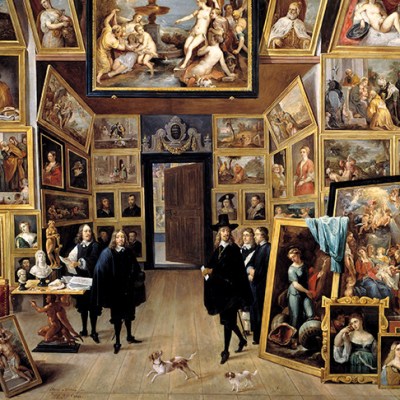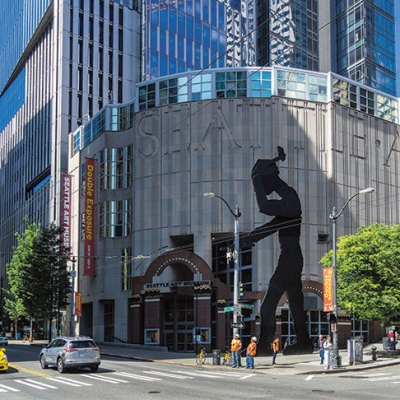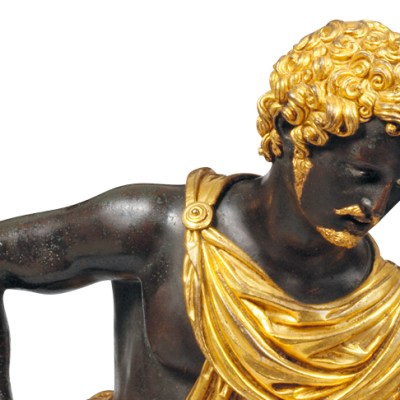I first met Edmund Capon in 1996, soon after I joined the staff of the Art Gallery of South Australia in Adelaide as its most junior associate curator. By then, Edmund had served for almost 20 years as director of the Art Gallery of New South Wales in Sydney, having taken up that post after a stint as assistant keeper in the Far Eastern Department of the Victoria and Albert Museum in London. He went on to serve as director in Sydney for a total of 33 years until 2011, an almost unprecedented tenure. During that long period, he transformed the Art Gallery of New South Wales from one of the smallest of our state art museums into the national powerhouse of art that it has now become.
The kindness and generosity with which he first received me, and the warmth of his friendship since, which was revived five years ago when I became director of the National Portrait Gallery in Canberra, cannot be overstated. I am sure many other people, above all our vibrant community of Australian artists, must feel exactly the same way. News of his death in London, from melanoma, will come as a blow to every corner of the Australian art community, indeed far more widely than that. He was a remarkable and much-loved art museum director.
Edmund wore his scholarship lightly. He had the rare gift of communicating his passion for art to everybody, anybody. You felt that the welcoming atmosphere of the Art Gallery of New South Wales was merely an extension of his infinitely congenial personality, his charm, his wit, and his well-developed sense of humour. He was also naughty, very naughty. Edmund once remarked that in all the years he had known our great painter the late Arthur Boyd, and Edmund knew him well, he couldn’t remember an occasion when Arthur ever finished a sentence.
To a very large extent, Edmund was the kind of director who shaped his institution, led his staff and pursued great acquisitions – one thinks, for example, of Picasso’s late Nude in a Rocking Chair (1956), or Banks of the Marne (1888) by Cézanne, or Sidney Nolan’s Ned Kelly picture, First-Class Marksman (1946). But on a practical level, and without giving this impression in any way, he was indeed a most effective administrator, navigating the often difficult, at times crafty labyrinth of the state government of New South Wales with great effectiveness, charming successive premiers – not by any means an easy task, not in New South Wales anyway – and successfully resisting the battier of public policy initiatives, above all entry fees. Edmund said he hated the idea of charging people to get in, preferring instead to charge them for getting out (by means of two excellent restaurants and a fine museum shop, among other methods).
Edmund was a showman, no doubt about it, and a very successful one, but he was also a straight talker. He did not hesitate to call out rubbish when he saw it, and he saw it quite often. However, to some extent Edmund’s showmanship diverted attention away from some of his least publicised but most important achievements: his unfailing commitment, for example, to building and supporting the gallery’s research library and archives, now perhaps the most comprehensive and important outside Canberra. That alone would be enough for Edmund to have made an enormous impact upon art-historical scholarship in this country.
Sydney, meanwhile, was perfect for Edmund, and Edmund perfect for Sydney, that oldest and most visually spectacular Australian city, with its cheek, its fun, its glorious, snaking Harbour over which the Art Gallery of New South Wales looks from its incomparable site in The Domain, high above Woolloomooloo. Any doubts in 1977 as to whether a learned English scholar of Chinese art would adapt himself to that most hedonistic of Australian cities were quickly dispelled. He flourished there. He inspired greater and greater, indeed transformative philanthropic gifts. He transformed his institution’s collection. Indeed, he has left an indelible mark on Sydney. They loved him there, and he loved them back. I doubt if there will be another director of the Art Gallery of New South Wales who will ever manage to inspire a brimming Sydney soccer-stadium crowd before a match to chant his name over and over again – ‘ED-MUND, ED-MUND’ – which is not something I am ever likely to forget.
To Joanna, their family, Edmund’s former staff (among whom he inspired fierce loyalty) and to his many friends and colleagues here and there, I extent my sincere condolences and sympathy.
Angus Trumble is a former director of the National Portrait Gallery of Australia in Canberra.


